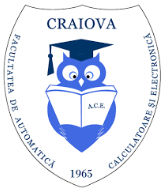Home
|
Project name: |
"Intelligent and distributed control of 3 complex autonomous systems integrated in emerging technologies towards personal medical and social assistance and servicing of flexible precision manufacturing lines" - PN III program Development of the national R&D system, contract 78 PCCDI/2018, INTERN NO. AU 11-18-02 |
|
Acronym: |
CIDSATECH |
|
Responsible for UCV: |
Prof. dr. ing. Dorian Cojocaru |
|
Subproject name P1: |
"Design, modeling and simulation in operation of distributed sensor configurations and visual servoing systems on complex autonomous systems (CAS-SI, CAS-ARP, CAS-VAM) intended for medical/social, in-/out-of-hospital and home personal assistance technologies" |
|
Director P1: |
ș.l.dr.ing. Cristina Pană (Reșceanu) |
|
Department: |
Mechatronics and Robotics |
|
Period: |
01.03.2018 - 30.09.2021 |
|
Aim of the project: |
The aim of the complex project (composed of 5 composite projects carried out by Univ. Dunarea de Jos din Galati - coordinator, Polytechnic University of Bucharest, University of Craiova and Valahia University of Targoviste - partners): modelling, simulation, balancing and management of two (laboratory) flexible manufacturing, assembly and processing lines, respectively, served by complex autonomous systems equipped with manipulators, to perform disassembly and reprocessing, respectively. Aim of the component project P1 (carried out by UCV): As a whole it aims to develop mobile platforms with advanced sensor systems. The P1 project aims to support navigation guidance systems based on information provided by an integrated sensory system including image sensors. The sensory system provides information from the operating space, but also information from the user (e.g. gestures or mimics), including people with disabilities. The mobile robotic platform will be an autonomous platform with powered wheels and one or two steering wheels, and may be equipped with a manipulator. The steering system (the one that will be supported by the sensory system mentioned as the subject of P1) will have remote communication facilities and use advanced control techniques. The navigation and obstacle avoidance system is based on a variety of sensors, including machine vision, ultrasound and laser. Such a system can also be used as an extra/intra-hospital personal robotic assistant for people with disabilities. Deployable technologies based on the integrated sensory system allow in addition to obstacle avoidance navigation and support of people, including people with disabilities, using this platform. |
|
Objectives of the project P1: |
STAGE 1-1 OBJECTIVES. Define, analyse, select and integrate the sensory structures in the steering system for the mobile platform. OE1-1.1. System analysis for mobile platforms System analysis for mobile platforms with determination of: quantities to be measured (distances, speeds, accelerations), accuracies required for identified measurements. Types of sensors that can support the identified principle solutions will be identified: sonars (wireless gyroscopes, GPS receivers), infrared sensors, limiters, machine vision sensors. The technical and economic performance of sensor configurations that can be used on mobile platforms will also be analysed, and finally the optimal solutions for the analysed sensors will be selected. OE1-1.2 Consideration will be given to: system integration of the individual sensor solutions selected in Activity 1 as well as the design of the sensor structure for the mobile platform. OE1-1.3 Analyse and select: wired and wireless communication solutions to support sensory integration, sensory integration techniques between the image-based machine vision sensors themselves and other sensors, integration and interfacing solutions of the sensory architecture into the driving architecture for the mobile platform. OBJECTIVES STAGE 2-1. Model and simulate the integrated sensory system. OE2- 1.1. Model and simulate the sensors selected in Step 1-1. OE2- 1.2. Model and simulate the sensory system defined in Step 1-1. OE2- 1.3. Simulate obstacle avoidance trajectory control algorithms based on the information provided by the distributed sensory system. Disseminate the results obtained. OBJECTIVES STAGE 3-1. Design and functional testing of the integrated sensor system. OE3- 1.1. Design the integrated sensory system in the driving system. Dissemination of the results obtained. OE3- 1.2. Functional testing of sensors of the type selected in the previous steps. OE3- 1.3. Final design specifications of the distributed sensor systems integrated in the three mobile systems. Dissemination of the results obtained. OBJECTIVES STAGE 4-1. Functional testing of the integrated sensor system. Dissemination of the results obtained. |


